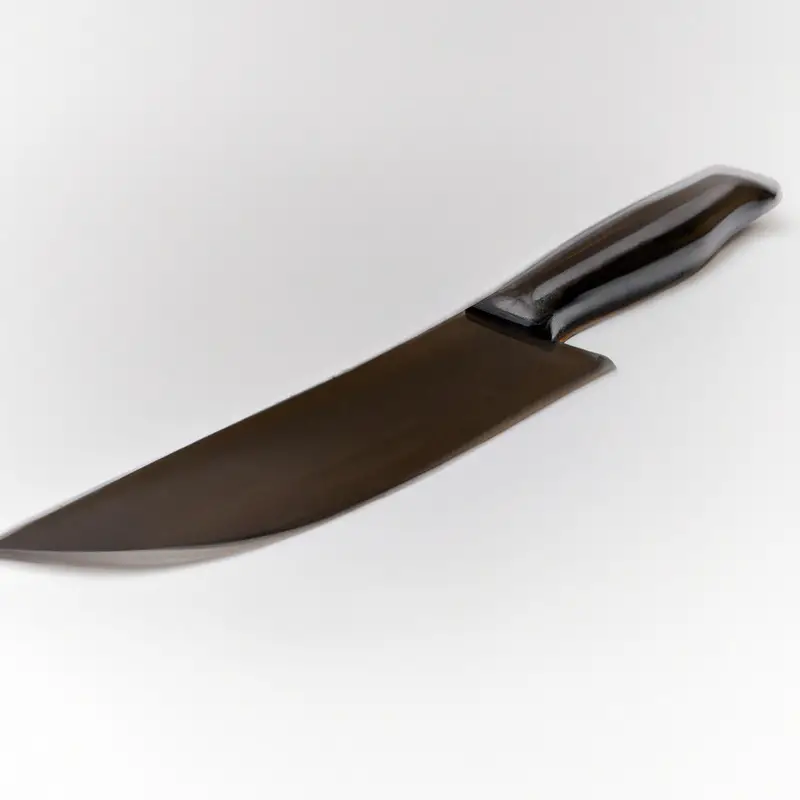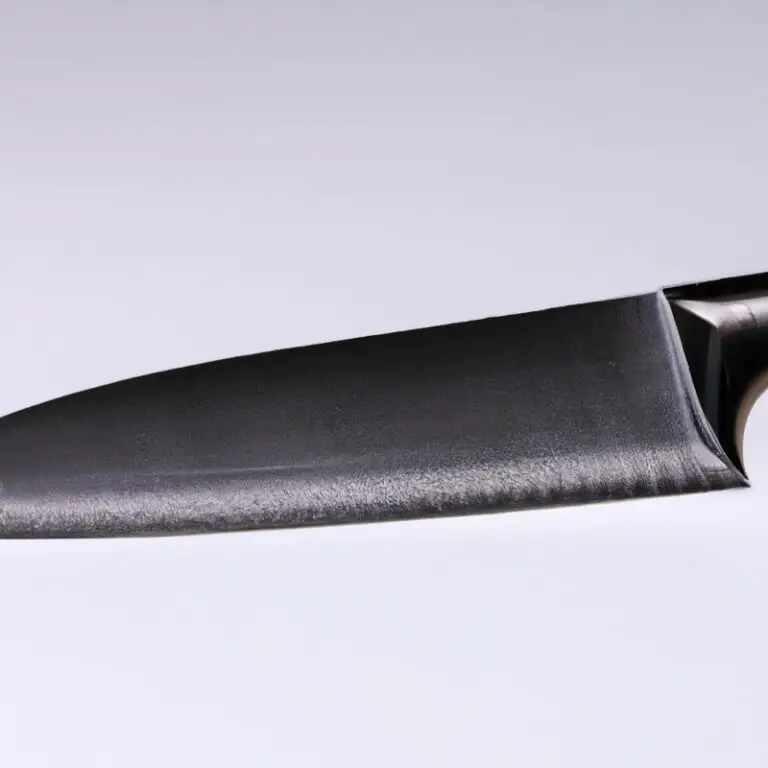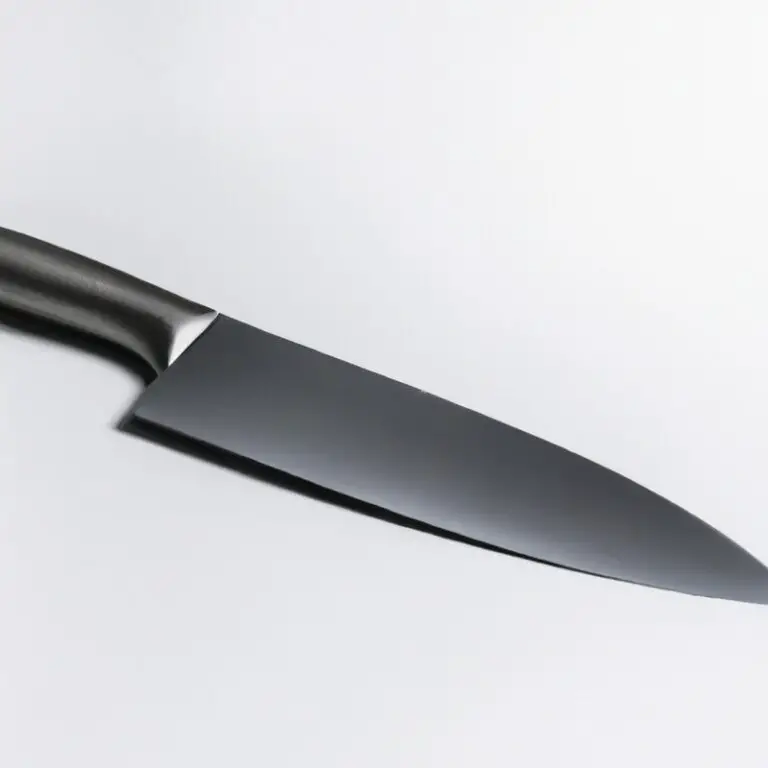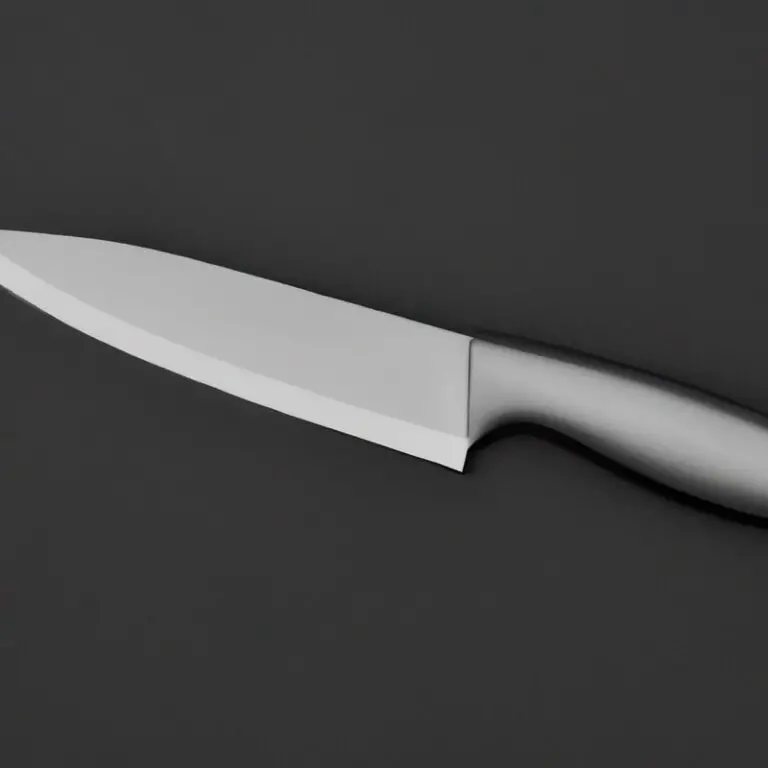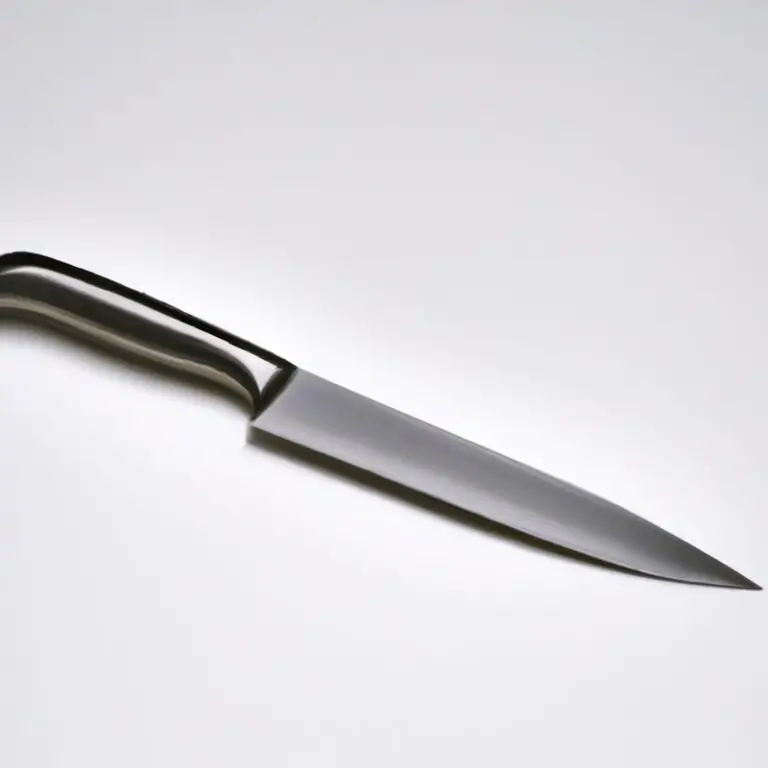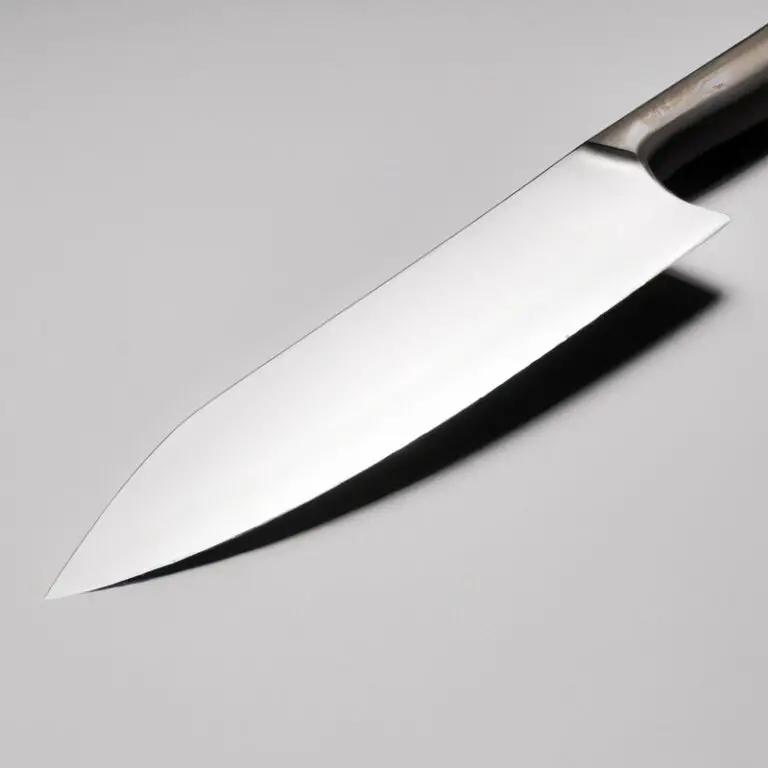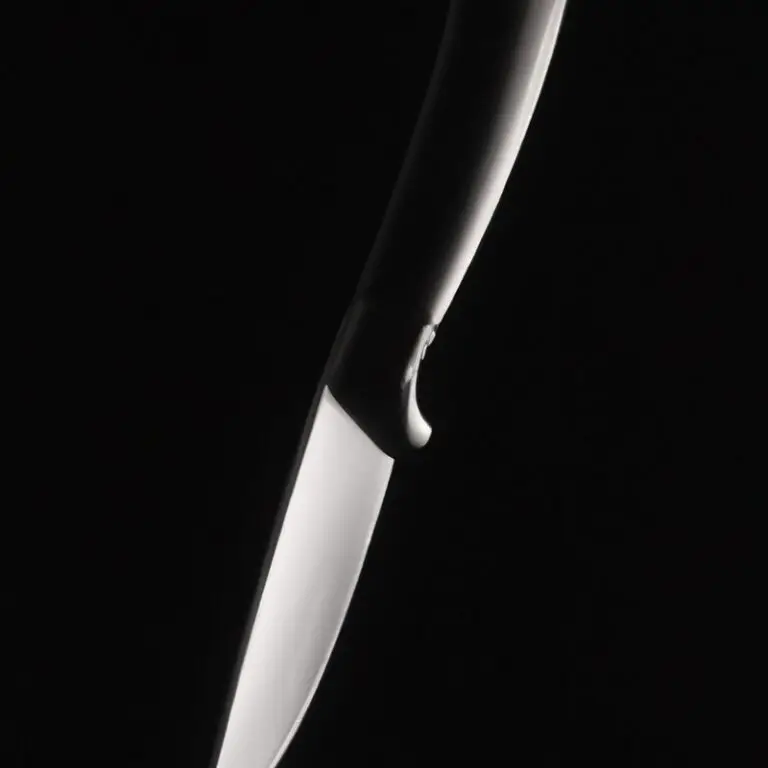How To Use a Santoku Knife For Precise Cuts? Master The Art!
Key Takeaways:
- Use a Santoku knife for precise cuts by holding it at a 10-15 degree angle and slicing through the food with a sawing motion.
- To avoid injury, ensure that the blade of the Santoku knife is kept sharp and clean, and always keep your fingers away from the blade’s edge.
- Practice makes perfect when it comes to using a Santoku knife, so take the time to experiment with different techniques and sharpening methods to find what works best for you.
- Whether you’re a professional chef or a home cook, incorporating a Santoku knife into your kitchen arsenal can help you achieve more precise cuts and elevate your dishes to the next level.
Do you struggle with achieving precise cuts in the kitchen? Look no further than the Santoku knife.
With its unique features and design, this Japanese knife is a go-to tool for chefs and home cooks alike.
But how do you use it? In this article, I will guide you through the anatomy of the Santoku knife, explore different cutting techniques, and provide tips for maintaining and sharpening your knife.
By the end, you’ll have the skills to impress your dinner guests with beautifully sliced vegetables, perfectly diced herbs, and paper-thin slices of meat.
| Cut Type | Technique |
|---|---|
| Batonnet | Start by cutting the food into slabs, then into thin sticks, and then lengthwise into batonnet |
| Brunoise | Cut the food into batonnet shapes, then slice it into smaller cubes with the tip of the knife |
| Chiffonade | Stack leaves of herbs or greens and make thin slices vertically with a rocking motion. Avoid pressing too hard. |
| Diagonal | Slice the food at an angle rather than straight up and down, at a 45-degree angle. |
| Julienned | Cut the food into thin batonnet shapes, and then cut lengthwise into thin, matchstick strips. |
| Mince | Hold the food firmly and chop with a quick, rocking motion, moving the knife back and forth. |
| Tourné | Start by peeling a section of the food, then carve an oval shape into one side, and then carve a slight curve to give it the classic tourné shape. |
Understanding the anatomy of the Santoku knife and its unique features
The Santoku knife is a Japanese multi-purpose kitchen knife that has become increasingly popular in Western kitchens due to its versatile design. The term “Santoku” translates to “three virtues” in Japanese, emphasizing its ability to excel at slicing, dicing, and mincing tasks equally well.
The blade of a Santoku knife typically ranges from 5 to 8 inches in length and has a straight edge with a slightly curved tip, allowing for a rocking motion during chopping and slicing.
It also has a shorter and wider blade than a traditional chef’s knife, giving it a better balance and versatility for different types of cutting tasks. The handle of a Santoku knife is usually shorter and straighter than that of a standard chef’s knife, providing better control and a comfortable grip for both small and large hands.
Another unique feature of the Santoku knife is the granton edge, which involves small indentations on the blade’s edge to prevent food from sticking and improve the slicing experience.
Overall, understanding the anatomy of a Santoku knife enables you to recognize its unique features and ultimately utilize them to achieve precise and efficient cuts in the kitchen.
Choosing the right cutting board and surface for using a Santoku knife
Choosing the right cutting board and surface is crucial when using a Santoku knife for precise cuts. A high-quality cutting board is essential to maintain the sharp edge of your knife and prevent it from dulling quickly.
Avoid using cutting boards made of glass, metal, or ceramic as they can damage the blade’s edge.
Instead, opt for a cutting board made of hardwood such as maple, cherry, or walnut. These materials are hard, durable, and gentle on the knife’s edge.
It is also important to consider the size of your cutting board based on the food you are preparing.
A larger cutting board gives you more space to work with and can prevent overcrowding, which can lead to uneven cuts. To keep your cutting board in good condition, clean it thoroughly after each use with warm water and soap.
Avoid using harsh chemicals or abrasive materials as they can damage the board’s surface.
Additionally, make sure to dry the board properly before storing it away. By choosing the right cutting board and surface for your Santoku knife, you can work efficiently and achieve precise cuts every time.
Mastering the basic grip and holding techniques for precise cuts
To master the basic grip and holding techniques for precise cuts with a Santoku knife, start by ensuring a firm but comfortable grip on the handle with your dominant hand. Use your other hand to hold and stabilize the food item being cut, making sure your fingers are tucked away and protected from the blade.
Always keep the blade perpendicular to the cutting board and apply even pressure while cutting.
Avoid twisting the blade or sawing back and forth, as this can damage both the knife and the food item. Practice these techniques regularly to improve your precision and control when cutting with a Santoku knife.
Exploring the various types of cuts and techniques possible with a Santoku knife
A Santoku knife can be used for a wide range of cutting techniques. The knife’s flat edge and rounded tip make it perfect for slicing, dicing, and chopping vegetables.
Cutting meat, poultry, and fish is also possible with a Santoku knife.
The hollow edge design on some Santoku knives can create air pockets, making it easy to slice through meat with minimal resistance. When creating paper-thin slices, it is essential to utilize a smooth, gliding motion.
The Santoku knife can also be used to chop and mince herbs and spices.
By using a rocking motion, it can help prevent bruising or damage to delicate ingredients. With the right techniques and blade, a Santoku knife can effortlessly create decorative cuts and garnishes.
When choosing a Santoku knife, consider the blade length, hardness, and design.
Understanding the various types of cuts and techniques possible with a Santoku knife can help you utilize this versatile blade to its maximum potential.
Slicing and chopping different types of vegetables with a Santoku knife
Santoku knives are versatile and particularly useful for slicing and chopping different types of vegetables. When using a Santoku knife for vegetables, it is essential to choose the right size of knife for the particular vegetable and make sure to hold the knife properly.
Keep the vegetable steady on the cutting board with one hand while cutting it with the other.
For delicate vegetables like tomatoes, a sawing motion works well to prevent bruising. For tougher vegetables like carrots or potatoes, use a rocking motion to chop them into small pieces or slices.
It is crucial to ensure the blade of the knife remains sharp to avoid crushing or damaging the vegetables.
Invest in a quality sharpener, or take the knife to a professional for sharpening when necessary.
Dicing and mincing herbs and spices with a Santoku knife
Dicing and mincing herbs and spices with a Santoku knife is an easy task due to its sharp and straight blade. The first step is to wash and dry your herbs and spices before finely chopping them.
Hold the Santoku knife with a proper grip and use a rocking motion to chop the herbs and spices on your cutting board.
To mince, continue chopping in a straight line until you achieve your desired texture. Additionally, keep blade contact with the cutting board so that you can achieve a consistent cut.
With a Santoku knife, you can quickly and accurately prepare herbs and spices that will take your dishes to the next level.
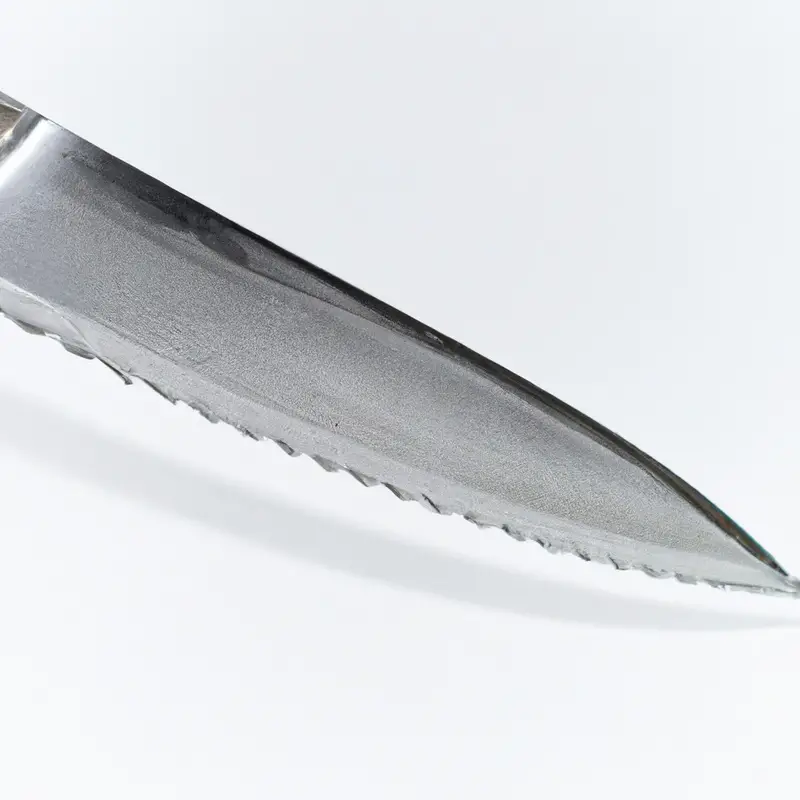
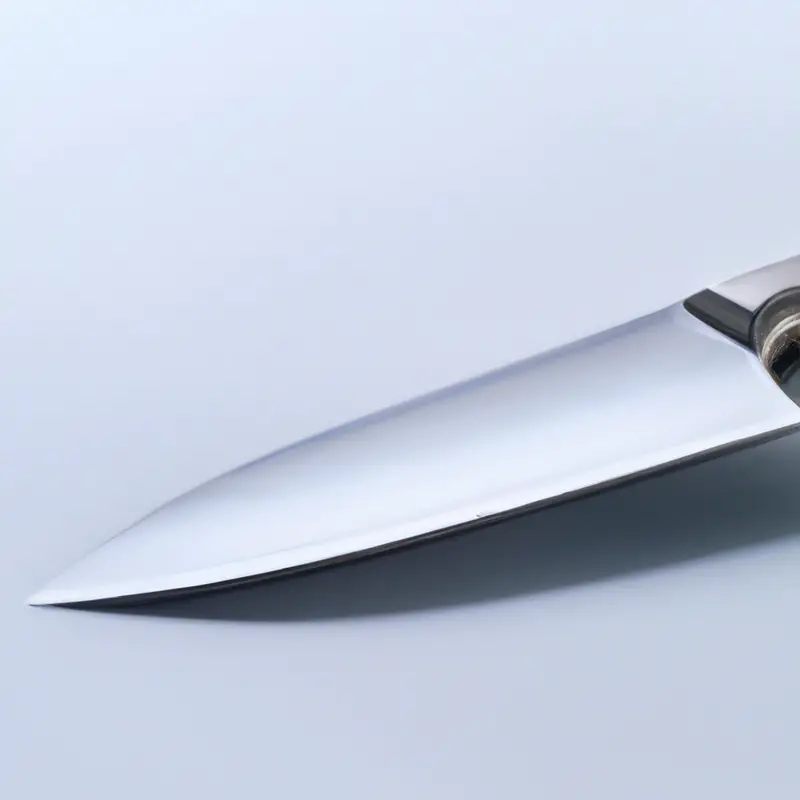
Achieving paper-thin slices of meat with a Santoku knife
Achieving paper-thin slices of meat with a Santoku knife requires precision and technique. To begin, ensure your meat is partially frozen to make it easier to slice thinly.
Next, use a sharp Santoku knife to slice across the grain of the meat, using smooth and fluid movements.
It’s crucial to maintain a consistent angle and pressure to avoid tearing the meat. For best results, hold the base of the knife while slicing and maintain a consistent thickness throughout.
Remember, practice makes perfect, so keep practicing until you achieve the desired thickness of the meat slices.
Tips for maintaining and sharpening your Santoku knife
To keep your Santoku knife in top condition, here are some tips for maintaining and sharpening your knife:
- Clean your knife after each use with warm water and mild soap, and dry it thoroughly.
- Use a honing steel regularly to keep the blade straight and sharp.
- Sharpen your knife at least once or twice a year using a whetstone or knife sharpener.
- Store your knife in a safe place, either in a knife block or on a magnetic strip.
- Avoid cutting on hard or abrasive surfaces, such as glass or marble, as it can damage the blade.
- Do not put your Santoku knife in the dishwasher as it may ruin the blade’s edge.
- Use the right cutting surface, such as a wooden cutting board, to avoid damaging the blade and ensure clean cuts.
- Always use your Santoku knife for its intended purpose and avoid twisting or prying with it, which can damage the blade.
- If your Santoku knife gets dull or damaged, take it to a professional knife sharpener who can restore it to its original condition.
Advanced techniques for using a Santoku knife, such as creating garnishes and decorative cuts
Once you’ve mastered the basic techniques of using a Santoku knife, you may want to take it to the next level by exploring some advanced techniques. One such technique is creating garnishes and decorative cuts.
This involves using the Santoku knife to create intricate and aesthetically pleasing designs from fruits and vegetables, which can be used to garnish dishes or simply as a beautiful addition to your plate.
To create garnishes and decorative cuts, you will need to have a good understanding of the different types of cuts that can be made with a Santoku knife, such as the julienne and chiffonade cuts. You will also need to have a steady hand and a lot of patience, as these cuts can be quite time-consuming.
One of the easiest garnishes to make with a Santoku knife is the cucumber fan.
To make this, simply slice a cucumber thinly using your Santoku knife, leaving the skin on. Then, carefully fan out the slices and arrange them on your dish.
You can also try making carrot curls or radish roses for a more intricate design.
When creating garnishes and decorative cuts, it’s important to remember that presentation is key. Take your time and pay close attention to the details.
With practice, you’ll be able to create beautiful designs that will take your dishes to the next level.
Exploring the different styles of Santoku knives available and selecting the perfect knife for your needs
Santoku knives come in different shapes, sizes, and materials, allowing you to choose one that suits your needs and preferences. Traditional Santoku knives typically have a 7-inch blade length, while western-style knives can be longer.
Some Santoku knives feature a hollow edge or granton edge that prevents food from sticking to the blade.
Others have a full-tang construction that enhances balance and durability. Additionally, different materials like stainless steel and high-carbon steel can affect the knife’s sharpness and longevity.
When selecting a Santoku knife, consider the purpose, frequency of use, and budget.
Professional chefs may require high-end, handcrafted knives, while home cooks may opt for budget-friendly options. Ultimately, picking a Santoku knife that feels comfortable and balanced in your hand is crucial for achieving precise cuts.
Final Verdict
To conclude, the Santoku knife is a versatile tool that can enhance your culinary skills and make your meal preparations effortless. By understanding its anatomy, mastering the grip, and exploring different cutting techniques, you can become a Santoku pro in no time.
Remember, choosing the right cutting board and maintaining your knife are crucial components of using it effectively.
With these tips and techniques in mind, you can confidently wield your Santoku knife to achieve precise cuts and beautiful presentations. Trust the reliability of the information presented here, and take action to elevate your cooking game with this exceptional tool in your kitchen.

